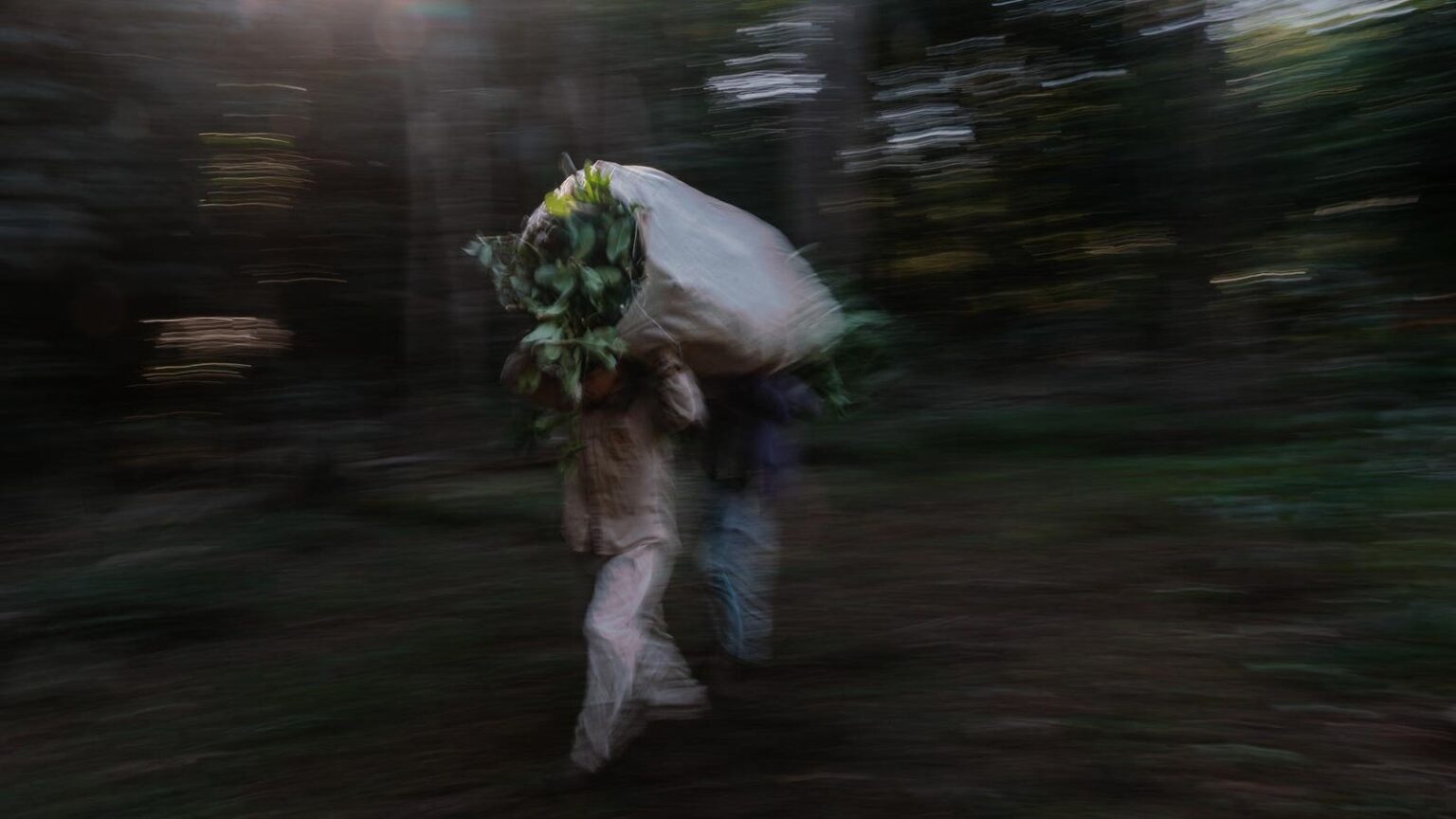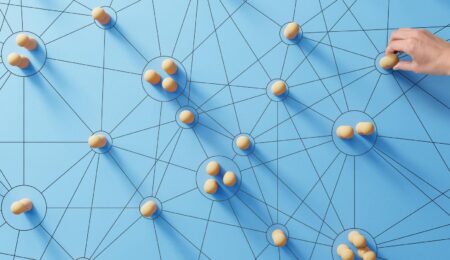In an era where sustainability has become a buzzword, beverage company Guayakí Yerba Mate stands out with its innovative “Market-Driven Regeneration™” model, demonstrating that with the right approach, market forces can indeed be harnessed to drive meaningful change for the environment and societies. Unlike traditional approaches to sustainability, which focus on avoiding harm and maintaining socio-ecological systems, regeneration actively works to improve health and biodiversity, often starting by aligning agricultural and business practices with nature’s inherent cycles.
Founded in 1996, this yerba mate company has been at the forefront of regenerative business practices for nearly three decades. Yerba mate, a traditional South American plant known for its stimulating properties, is harvested from the leaves of the holly family. Guayakí produces a variety of yerba mate-based drinks, including canned energy beverages, loose leaf yerba mate, and sparkling blends, all of which offer customers a new alternative to traditional caffeinated drinks.
I recently spoke with Ben Mand, CEO of Guayakí, about the company’s work and how companies can integrate regenerative practices into their core business strategy, the challenges of scaling such a model, and the evolving consumer landscape for sustainable products.
At the heart of Guayakí’s model is a commitment to shade-grown, regenerative organic farming practices that preserve biodiversity in the Atlantic Forest region of South America. These farming techniques foster biodiversity by using native plant cover and engaging in organic farming methods that nourish the soil rather than deplete it.
But as we discuss, their approach extends far beyond agriculture, encompassing fair trade practices, community development, and a holistic view of their entire supply chain. Their “Fair for Life” certification ensures that every worker along the supply chain—from the indigenous communities harvesting the mate to the factory workers—receives a living wage, with additional premiums paid above market prices to promote fair compensation. Guayakí has long-term, trusted relationships with these communities, ensuring that they are empowered and that their traditional knowledge is respected and integrated into the company’s operations. Their Market-Driven Regeneration model, as Mand puts it, “makes a connection between demand for our products and the positive outcomes we can create.”
Read more below for details from Ben on how Guayakí’s regenerative model is not just about producing a sustainable product, but about fostering a system where business success directly translates to environmental restoration and community empowerment.
Marquis: Would you mind saying a little bit both about the company, its core products, its mission, and then also about yourself?
Mand: Guayakí is a very purpose-driven business. In today’s world, which is so digital and often divided, Guayakí stands out because it’s rooted in connection and community. Yerba mate, especially when shared in a gourd, has been enjoyed for generations in South America. There’s a ceremony and ritual in packing a gourd and passing it around, which fosters a sense of connection.
From a business perspective, Guayakí is about regeneration—about rebuilding and making sure we leave every connection stronger. What has become popular in the U.S. is the ready-to-drink yerba mate products—whether it’s a can or a glass bottle. We brew yerba mate and then add mint, fruit juice, or other flavors. Consumers love the benefits, especially the natural caffeine boost, which is great in the morning or early afternoon.
Yerba mate comes from the holly family, not the tea plant, but it’s often mistaken for tea because it contains caffeine and is brewed in a similar way. We harvest, dry, and mill the yerba mate, then brew beverages with it or sell it as loose leaf. It has the polyphenols and minerals you’d find in tea, the caffeine of coffee, and the theobromine you’d typically find in chocolate, which gives you a bit of euphoria.
As for me, I’m originally from Wisconsin, and I’m a first-generation college student. I didn’t grow up with much, which taught me to be resourceful. I’m an optimist with a can-do attitude, and I think that has served me well. Over the course of my life, I’ve had to do a little bit of everything, and I enjoy that. Business wise, I grew up in Consumer Packaged Goods (CPGs) at General Mills, where I learned the fundamentals of running a business. I worked on mature businesses, but my approach was always to find ways to make products better while still delivering sales and profit growth.
After General Mills, I moved into smaller, purpose-driven businesses. Instead of figuring out how to improve products that reached 30–50% of consumers, my focus became scaling products that reach just 2% of households and trying to get that number to 10%, 20%, or 30%, all while strengthening the impact these businesses have.
At Plum Organics, a company focused on early childhood nutrition the mission was clear: to improve the quality of ingredients in baby and toddler food. We worked with experts to craft a supply chain that delivered better, less processed inputs into those products.
Harmless Harvest was similar in that it was a beverage company, very purpose-driven, and Fair for Life certified, just like Guayakí. Three months after joining Harmless Harvest, I transitioned the company from plain organic to regenerative organic. It was a big endeavor, considering the company wasn’t very profitable at the time, but I knew it was the right decision. We found ways to improve efficiency and the P&L while still moving toward regenerative organic practices.
There are a lot of parallels between that experience and what I’m doing now at Guayakí. I’ve been drinking yerba mate for years, and I’ve always had my eye on the brand. So, when Guayakí came calling, looking for a new CEO, I was thrilled. It’s a brand that resonates with me, and I believe it has a ton of potential. The question now is, how do we do even more?
Marquis: I’d love to talk now about the Market-Driven Regeneration model. What do you mean by regeneration? And how does Guayakí think about it, particularly in relation to yerba mate?
Mand: Market-Driven Regeneration really starts at the source. It’s the ethos of our business and begins where we grow yerba mate, which comes from Brazil, Paraguay, and Argentina. That’s where we have our long-standing relationships with local communities. We work with them not just on growing, but also on harvesting and purchasing the yerba mate.
Our focus is on shade-grown, regenerative organic farming. From a farming standpoint, it’s all about biodiversity. We’re not talking about fields like what you might see in California with almond trees or olives. Yerba mate typically grows in a forest environment, so there’s shade cover provided by native plants. That’s a key part of what we do—growing yerba mate in its natural environment under native plants to maintain biodiversity. We’re certified regenerative and fair trade, which ensures that everyone involved is paid a livable wage. We also pay a premium above market prices.
The idea is that it’s an entire ecosystem—whether you’re thinking about indigenous communities, the environment, the factory we run, or the partners we work with. It’s about creating mutual success. Our goal isn’t to succeed at the expense of our partners; it’s to make sure everyone involved is better off through the work we do together.
Marquis: Can you say a little bit about how you think about your regeneration model beyond just the agricultural aspect, for example how you sell in the United States, engage with the communities that your farmers are in?
Mand: One of the things I find really special about Guayakí, and working with yerba mate, is the long-standing relationships we’ve built with the communities we partner with, including many Indigenous communities. For example, we’ve been working with the Aché Kue Tuvy people since 2002. We have other relationships that range from 10 to 20 years, and there are some communities I’ve visited that we just started working with six months ago. What’s amazing about these partnerships is that they’re not just based on long-term contracts or transactions. They’re about real relationships.
For instance, with the Aché Kue Tuvy community, we’ve not only been harvesting yerba mate with them, but also helping them plant seedlings, expand their tree cover, and increase their acreage over the years. That’s just one piece of the puzzle, though. We’re also working with them on processing. We’ve built a small factory where they can dry and package the yerba mate before sending it to our larger factory for further processing. This brings value-added activities into their community, creating more jobs and opportunities for local people.
The really exciting part is that the World Bank is now involved in funding a project to expand this factory. When it’s completed, they’ll be able to do even more of the processing themselves. This long-term partnership, with us investing over time and partnering closely with them, is instrumental in helping the community develop trade skills and build value-added capabilities. Now, they’ll have a factory manager, teams of workers, engineers, payroll staff—all the activities needed to run something they fully own and control.
Marquis: How does yerba mate move downstream in your supply chain? Could you describe the production process that results in the products consumers can buy, especially from a regenerative standpoint.
Mand: In Brazil, we have our own factory. From a Fair for Life standpoint, we can only have a small percentage of our workforce as temporary employees. This was the same approach at Harmless Harvest, where I worked before. The idea is that you want to employ people year-round, not just seasonally. So, employment practices as a Fair for Life organization dictate how we run the factory.
Right now, we have times of the year where our workforce is underutilized, which creates inefficiency. When I stepped into the role, I took a fresh look at our supply chain to figure out how we could improve efficiency, both financially and environmentally. One big question was how to reduce miles and maximize the density of products in containers to cut down on costs and environmental impact.
At the moment, we process our loose leaf yerba mate and the bags in the U.S. We ship dense bales of aged yerba mate from Brazil to the U.S., where we pack it and send it out. But now, we’re looking at centralizing that process in one location, rather than shipping the product all over the U.S. This would streamline everything and make our operations more efficient.
The liquid is a bit different. We don’t produce the liquid in Brazil—we make a yerba mate brew here in the U.S. Right now, we’re also exploring how to make that more efficient. For example, we do a light concentrate of the brew, but we could take out even more water so we’re shipping mostly the solids. It’s similar to how juice concentrates are shipped and rehydrated later.
Efficiency is a big focus for us, not just in terms of labor and how we partner with communities, but also in streamlining the entire supply chain. It’s about reducing miles, increasing container efficiency, and thinking about how we can make smarter logistical choices. That’s really where we’re putting a lot of effort right now.
Marquis: Why define Market-Driven Regeneration as your own model? Why not just say you’re Fair for Life and Regenerative Organic certified?
Mand: The term “Market-Driven” highlights that we’re a for-profit business, not a nonprofit. We believe we can build a successful brand in financial terms while also living into our purpose and mission. The terminology helps people understand that consumers play a key role in this. They have the power to make choices that are better for them, better for people, and better for the planet.
For us, it’s about making amazing products that meet people’s needs while doing the right thing. When you create demand for a product that does good, you can have a positive impact. It’s something I’ve noticed in board conversations, especially with our Regeneration Committee. The founders are always talking about how we can buy more yerba mate. It’s not just about growing the business—it’s about paying a premium, reinvesting in the community, and driving more positive impact. That’s what Market-Driven Regeneration means: making a connection between demand for our products and the positive outcomes we can create.
Marquis: What have you done to help other companies understand or adopt this model?
Mand: I can’t speak to every conversation the team has had, but having this defined model has given us a way to talk about it consistently. It’s a powerful concept, and we wanted to position ourselves as leaders in the regenerative movement.
At Harmless Harvest, we didn’t use the term “Market-Driven Regeneration,” but we had a similar approach. We focused on making great products that consumers wanted to buy, which naturally pulled them toward products sourced in a fair, humane way. We worked with farmers using regenerative organic practices that were better for the environment, helped sequester carbon, and supported communities. The concept is the same; we just didn’t have the exact language at the time. But it’s important for people to start understanding this idea more clearly now.
Marquis: Are there other companies you’re looking to in this space from which you can learn about regenerative practices?
Mand: I was recently at an offsite retreat with One Step Closer, which brings together thought leaders from both technology and small, burgeoning companies—some larger, some smaller. Dr. Bronner’s and Numi were part of it, and there were lots of great brands in the cohort. It’s a great opportunity to learn from one another, whether you’re doing $500,000 in sales or $500 million. Everyone is working toward similar goals, but we’re all doing things a bit differently.
When it comes to regenerative farming, for example, the approach varies depending on where you are. Farming in South America is very different from farming in Thailand or California, where almonds or cashews are grown. Each region presents its own set of challenges and best practices, and sharing those is invaluable. Sometimes, it’s about understanding how to apply these practices elsewhere or sharing data on things like soil health and yields. At Harmless Harvest and now at Guayakí, we collect data on things like shade-grown versus sun-grown yields, so we can compare and understand the differences, whether it’s coconuts, yerba mate, or cashews.
Marquis: Could you explain why having the Regenerative Organic certification is important for you? What have you learned from the certification process, considering you were already implementing regenerative practices?
Mand: A big part of my role at Guayakí is to future-proof the organization. I want to ensure that even if the leadership team changes, the company still lives up to its original mission and purpose. One way to do that is through certifications. They keep us honest and ensure we’re adhering to our principles.
Certifications also offer learning opportunities. We go through annual audits, which allow us to see where we’re excelling and where we need to improve. You want to perform well and lead the industry, but you also don’t want any blind spots. If audits uncover any gaps, we figure out what we’ve learned and what changes we need to make.
It all ties back to Market Driven Regeneration. Consumers are realizing they can’t wait for governments or other organizations to solve these problems—they can make responsible choices themselves.
Certifications like Fair for Life and Regenerative Organic help give them that quick reassurance.
Marquis: Could you share some examples, either from your time at Guayakí or at Harmless Harvest, where the certification process revealed something you needed to change?
Mand: We’ve definitely had a range of learnings across organizations. It’s important to remember that certifications don’t just involve one person—they span the entire organization. At Guayakí, for instance, it touches everything from our facilities in South America to our finance, accounting, and commercial teams. Everyone is part of the process, and it becomes a learning experience for the entire company.
One example is when we started thinking about the partners we use for in-store displays. Do they have the right codes of conduct? Are they using the right materials? What’s the end-of-life impact of those materials? It wasn’t just about our factory but about every aspect of our supply chain. Once you start going through these audits, it helps everyone see where they can make different choices. Even something as small as a cleaning service becomes an area where you can apply more sustainable practices. That’s one way these certifications push us to think more holistically.
Marquis: Could you talk a little about Guayakí’s consumer profile and how you’re planning to expand it? It seems like a passionate but possibly niche group—how do you plan to grow?
Mand: Our core consumer tends to be younger, ranging from college to young adulthood. Yerba mate often becomes their preferred energy boost as they start to move away from coffee or other forms of caffeine. The discovery of yerba mate typically happens in college, when they’re cramming for exams and need something to help them power through.
But it doesn’t stop there. Our consumers are young, full of life, and love outdoor activities, music, and being with friends. They also care deeply about the environment and social responsibility. They want to align with brands that reflect those values. So, our sweet spot is really that Gen Z and millennial crowd who value responsible products.
Marquis: How are you working to communicate sustainability and regeneration to consumers and have that be an important part of the story of yerba mate as consumers are adopting it?
Mand: We started on the West Coast, but we’ve been expanding nationwide over the past few years. There’s a natural desire to make a positive impact, and our challenge is to help people recognize that they can make a difference with their purchasing decisions.
That said, it’s a tricky balance. Consumers aren’t always looking for a purpose-driven message in their social media or marketing—they want to be entertained or educated in other ways. So, it’s important to stay true to the fundamentals of building a brand. You need to understand who your consumer is, what they need, and how your product meets that need.
There are moments where it makes sense to bring the purpose-driven message to the forefront, like during Earth Week or the holidays when people are focused on giving back. I believe that doing good should be baked into everything we do, and then we can sprinkle in those moments where we celebrate it. You don’t want it to come across as self-promotional, even if it’s authentic. It needs to be shared in a way that feels natural and not forced.
Marquis: How do you approach different distribution channels, like Natural Foods Markets or big chains like Target?
Mand: The distribution piece is really important. Big companies like Coke and Pepsi dominate the shelf space because they have the resources to secure that real estate. This means consumers often don’t have the opportunity to choose different products because retailers aren’t allocating space for them or helping with education.
Retailers do have opportunities, like end caps and merchandising events, to feature smaller brands, but these brands usually don’t have the big budgets that multinationals do. Still, if we want to change consumer behavior and encourage the purchase of environmentally and socially responsible products, retailers need to step up. To even be on their shelves, you must meet certain criteria, so consumers trust that products in these stores are aligned with their values. Plus, natural retailers often have programs that highlight and educate consumers on responsible products.
Interestingly, Target does a great job with in-store experiences. People often talk about “Tar-Jay” because it offers more than just shopping—it creates a theater-like environment. They used to have a program called Made to Matter, which was Target’s way of showcasing brands with a purpose. Unfortunately, when times get tough and budgets get cut, programs like this are often the first to go.
On the other hand, traditional grocery stores face different challenges. Their businesses rely heavily on labor, and with low unemployment, it’s hard for them to even stock shelves, let alone focus on the next level of consumer education. These environments are also harder for responsible brands because they have to hit certain sales velocities quickly to stay on the shelves. They need time to build momentum, but the system doesn’t always allow for that.
Marquis: Finally, understanding how all of this is connected in the company, can you explain how the governance and ownership of the company are structured to align with this mission? And as someone coming in after 28 years of founder-led leadership, how have you adjusted to your role?
Mand: From a governance perspective, we have all the structures you’d expect from a social purpose corporation, such as bylaws and annual reporting requirements. But what I think is important, and maybe what you’re getting at, is how our governance supports our mission beyond just the financials.
One thing I really love is that we have a separate Regeneration Committee, much like a Compensation Committee, that meets regularly. One change I made is to ensure the entire leadership team attends these meetings. We can only be successful if everyone understands our goals and is accountable for driving results. This has been a shift for the organization, but it’s important to get the cadence right.
In the Regeneration Committee, we don’t talk about business results—we spend three hours focusing solely on strategy, initiatives, and setting priorities for the next 12 months. Afterward, we report back to the board, but the Regeneration Committee allows us to go deep into our regenerative efforts.
In my first six months, I’ve spent a lot of time with the founders to understand the company’s history, their goals, and their vision. My role is to future-proof the business, to make sure it’s on a trajectory where it can live out the principles the founders established. I see myself as the bridge between their vision and the realities of running a successful, profitable business. Financial success is what allows us to keep fueling our purpose.
Read the full article here











